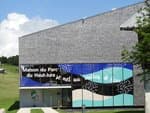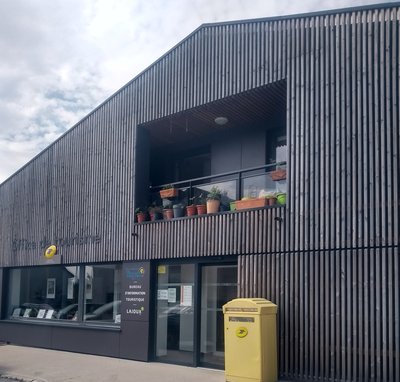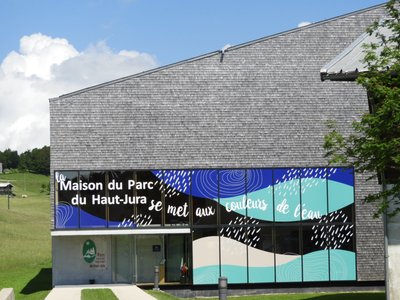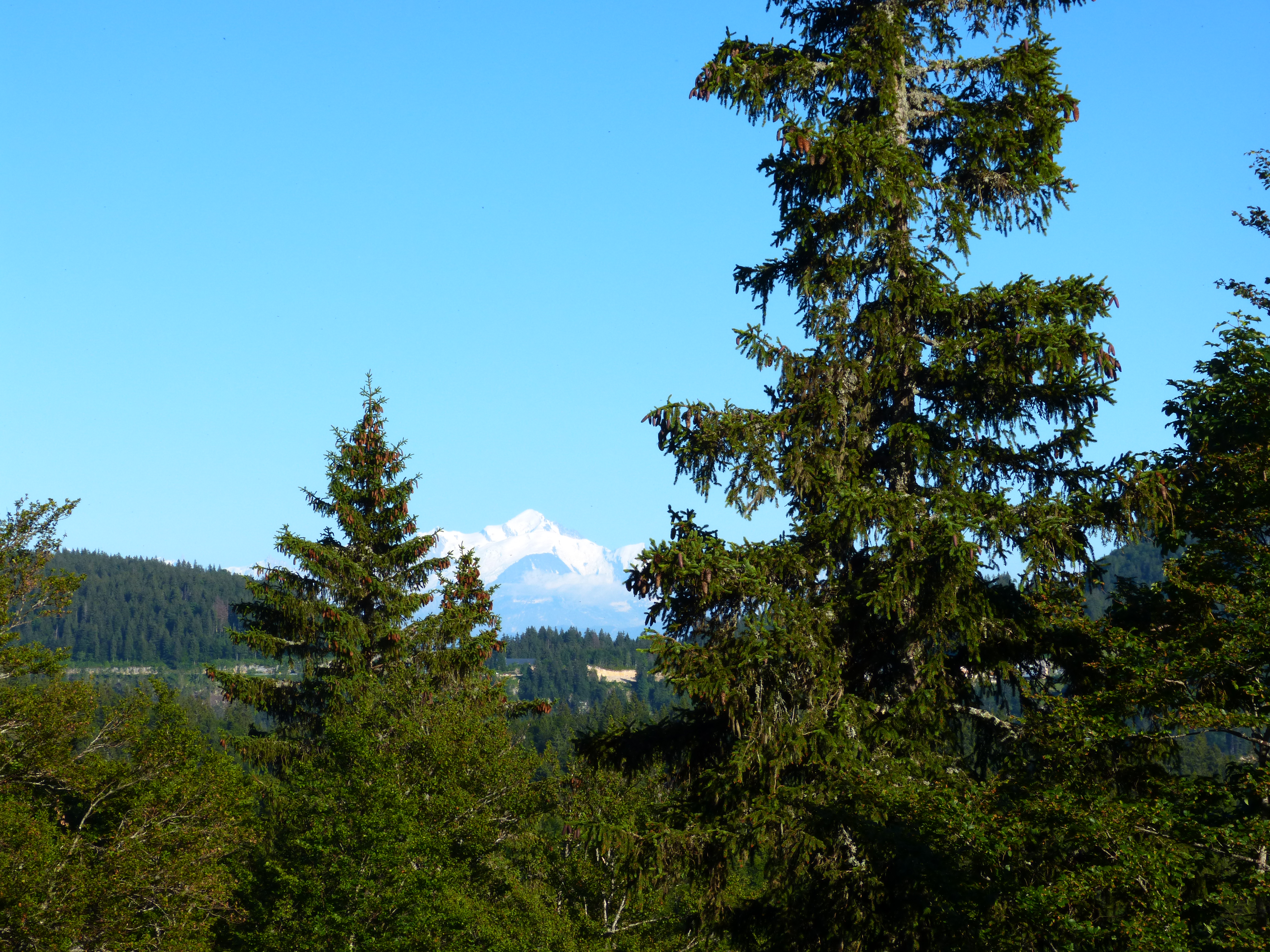
Leafy trail of the thriving Lajoux
The Year 5 and Year 6 students worked during their school year on sharing the remarkable aspects of their forest with you through this hike.
10 points of interest
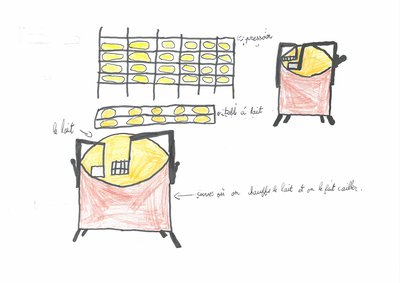
La fromagerie - Ecole de Lajoux Pastoralism and agricultureCows and Comté
Cows eat grass but grass alone isn’t enough.
To produce milk, they need to have a calf.
During the day, they graze. Mornings and evenings are spent in the milking parlour.
At night, the lorry from the cheese dairy picks up the milk from several farms. Early in the morning, cheesemakers curdle the milk by heating it and adding calf rennet (from the calf’s stomach) to produce Comté. The Comté’s flavour is determined by the quality of the grass.
Emy and Sacha C.

Les empreintes du renard - école de Lajoux FaunaClues: The fox, the hare and the squirrel.
Let’s discover local wildlife with a few clues.
If you come across small round droppings, you’ll know a hare has been here. Hares are herbivores and they take up shelter in burrows.You will know if a fox is around by its tracks, which are almost identical to a dog’s pawprint. However, the fox’s digits are spread out much wider and it walks in straight lines.
If you want to know whether there are any squirrels in the area, look at the spruce cones on the ground to see if they have been nibbled on or not.
Ellyne, Morgane and Néo .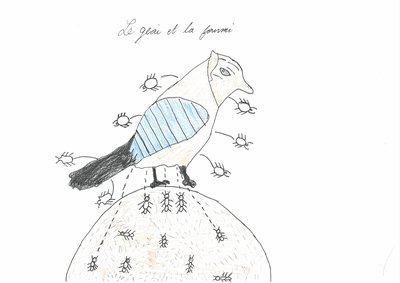
le geai et la fourmis : cohabitation positive ! - école de Lajoux FaunaThe ant and the jay
The Eurasian Jay is a brightly coloured bird from the Corvidae family. Mainly an insectivore, it eats words, larvae, acorns and beechnuts.
The Jay has its own way of getting rid of ticks and other small insects: it lands on an anthill to frighten the ants. They then defend themselves by releasing formic acid which allows the jay to get rid of the little bugs. The jay then picks them up with its beak and places them in the anthill to feed the ants.
Maëlle and Laly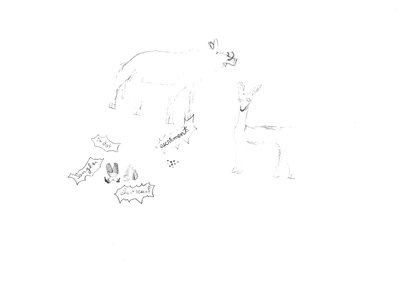
Quelques indices que vous pourriez découvrir... - G.PROST FaunaTracks and clues: deer and boar
Keep your eyes peeled! You might find a few tracks and other clues on your path!
Tracks:
The boar has hooves that are over six centimetres long and the deer’s are less than six centimetres. Deer have antlers that are partly detachable bone. A boar can sometimes be detected from upturned earth in fields.Deer and boar droppings
Droppings are very useful to find animals such as deer, foxes and boar... Using a stick, we can see what the droppings are made of and learn what the animal has eaten and what animal it is.
LALIE AND SACHA V.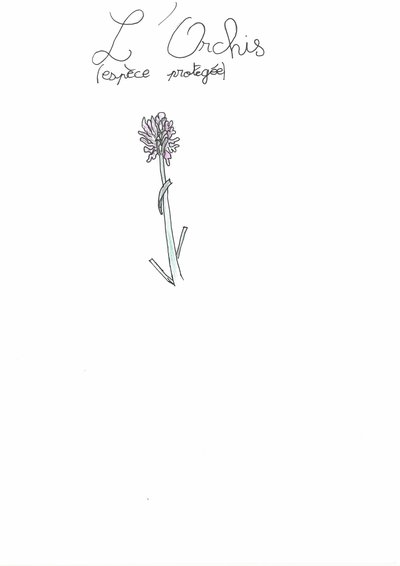
orchis - Ecole de Lajoux Natural environmentsProtected species
On your way, you might come across remarkable species that are a part of the quality of the High-Jura’s biodiversity. Some of these species are protected by law, while others are not protected but are a part of our heritage and must be observed with care. We have decided to mention three species that we particularly like.
The lynx: This mammal is a carnivore. It’s like a big spotted cat with feathered ears. The lynx is a wary and discreet animal, so it’s very hard to find one. But we like to know that it’s in our forests!The western capercaillie: It’s like a big chicken with colourful feathers (brown, red, black and green). It can fly, but not for long and not very high (it can perch on trees). It is sensitive to disturbances in the winter and spring.
The orchid: There are many species of orchid. In June and July, you might come across the elder-flowered orchid on this trail. It can be either fuchsia or vanilla. Although this species isn’t protected, it’s best not to pick it, nor squash it or rip it out.
We are counting on you to protect these species, to be discreet and to not leave the trails!
Manon and Jade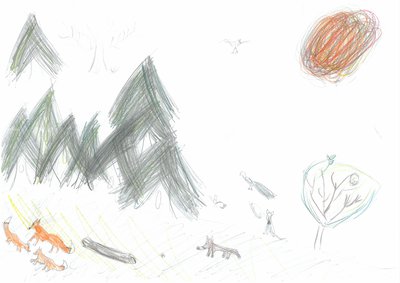
Ecole de Lajoux Natural environmentsThe Jura forest
The Jura forest is mainly comprised of beech, spruce and fir trees, all of which have very different root systems: the roots of fir trees consist of a taproot (roots that are buried deep underground pointing downwards), beech and spruce trees have flat roots (roots that follow along the ground), while pine trees have heart roots (roots that dig into the ground and spread out along the surface). These trees grow in mountainous climates (harsh climates). They are built to resist the cold and if the climate becomes too warm, some trees like the spruce may not survive.
Erine and Neyssa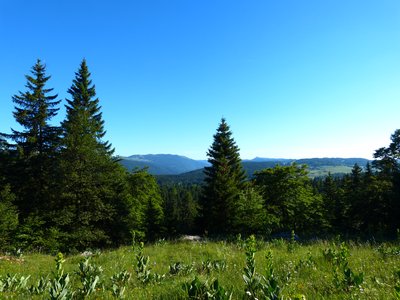
Vue du crêt de la Vigoureuse - PNRHJ / Gilles Prost ViewpointViewpoint from the Crêt de la Vigoureuse
This summit, whilst discreet, is actually an ideal place to admire the landscape offered by the High-Jura mountain range and the High-Combes punctuated by the Crêt de Chalam. When the weather is nice, by moving a few metres between the low wall passage and the summit, visitors can see the Mont Blanc shining in the dip created by the Faucille Pass.
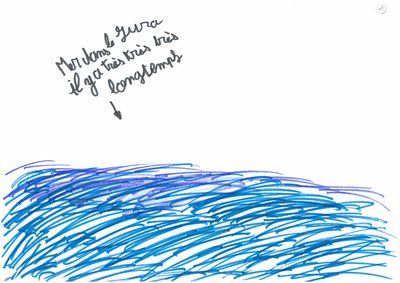
Il y a des millions d'années, la mer recouvrait le Jura - Ecole de Lajoux GeologyThe Jura mountain range
The Jura is a mountain range comprised of plateaus. It formed millions of years ago thanks to the Alps mountains. It all started with tectonic plates which came together and pushed very hard against each other. After a while, these plates pushed upwards to form the Alps, while the Jura folded. The Jura takes its name from the well-known age of dinosaurs: the Jurassic period. We must remember that the sea was once here. Thanks to the dead animals that lying at the bottom, sediment formed. This is why there is a lot of limestone and many fossils here.
Thibaut and NINO
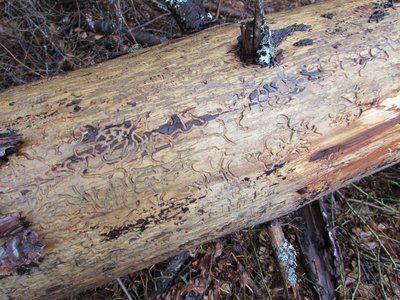
des galeries de scolytes sons l'écorce d'un épicéa - Anne-Laure Capelli FloraA tree’s health
A tree can live for several tens (or hundreds) of years if it is in good health.
However, even if it is still standing, a tree can be dead if its core is dead.
How can you tell if a tree is sick?
When a deciduous tree has yellow, brown or red leaves in the middle of the summer, compared to others which have green leaves, this can be a sign of sickness.
When a tree is dead, you can tell because it loses its bark, its leaves are the same colour as in the autumn, it can have holes or marks left by parasites such as the shot hole borer and it loses its leaves (or needles if it is a softwood tree).
Yet, dead trees aren’t problematic in the forest. Quite the opposite!
Clara and Candice
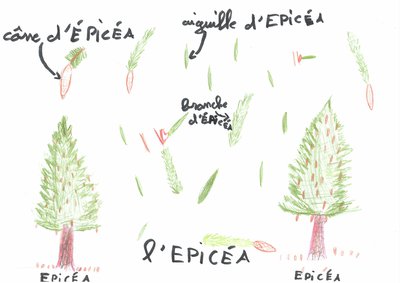
Les caractéristiques de l'épicéa - école de Lajoux FloraDifferences between the fir tree and the spruce
Can you tell between the fir tree and the spruce? A few pointers might help:
- The position of the cones: Spruce cones (fruit) hang, while those of the fir tree stand up straight.
-Cones on the ground or not: Spruce cones can be found on the ground, but fir cones are not as they stay standing on the branch and don’t fall off as easily.
- The colour of the bark: Spruce: brownish red and scaly, Fir-tree: grey.
- The tree’s shape: The crown of the spruce is pointed, while the fir tree’s crown is flat.
- The colour of the needles: On the spruce, the top and the bottom of the needles are the same colour, and on the fir tree, there are two white lines underneath.
-Is the needle sharp? On the spruce, the needle is pointy and sharp, while the fir tree’s needles are rounded.
- What happens if you remove a needle? On the spruce, part of the bark remains attached, while on the fir tree, the needle comes off easily.
- The needles around the sprig: on the spruce, the needles are scattered all around the sprig. The fir tree’s needles grow flat in two rows like a comb.
Olivia and Ewan
Description
From LAJOUX (

 ) follow the village road towards La Fromagerie (white and red waymarking) and then Route sur les Champs.
) follow the village road towards La Fromagerie (white and red waymarking) and then Route sur les Champs.
Turn right and follow the road that heads past Sous les Champs and heads uphill, bordered by a few houses and old farms (yellow waymarking). Continue on the path in the same direction bordered by low stone walls through the pastures.
The path heads into a first forest (MTB crossing to your left) and exits at the Combe du Sous (MTB crossing) after a short ascent. Head past two houses on either side of the path, Chez Gauthon, and continue into the combe to head up to Sous la Vigoureuse (MTB crossing).
Turn left (chicane to cross the fence) up the forest path for around 200 metres. A steeper trail to your left will take you past a fence and into a wooded meadow, before finally coming to the CRET DE LA VIGOUREUSE.
From the summit, head back down via the narrow and steep trail to the Bois de la Vigoureuse.
Turn left and follow the stony path through the woods, descending to the Combe du Sous and Chez Gauthon.
To head back to LAJOUX, take the same path to your right.
- Departure : Lajoux
- Arrival : Lajoux
- Towns crossed : Lajoux
Forecast
Sensitive areas
Western capercaillie
- Impacted practices:
- , Land-based
- Sensitivity periods:
- JanFebMarAprMayJunDec
- Contact:
Recommandations
This trail passes through pastures with livestock and forest paths. To respect the owners and farmers granting you passage, and for the security of livestock and wild fauna, we ask that you remain on the waymarked paths. Use the adapted passageways to get across fencing and be sure to close gateways behind you.
Please keep your dog on a lead if you have one.
Wild flowers are beautiful, they may be rare and protected and often wilt quickly. Do not pick them! They will delight the next hikers.
In case of forest works (felling, skidding, etc.), for your safety, know when to stop and turn around.
Information desks
Maison du Parc
29, Le Village, 39310 Lajoux
Tourist information centre - Haut-Jura Saint-Claude
3 place de l'Abbaye, 39200 Saint-Claude
Transport
To visit and get about in the High-Jura, visit www.reshaut-jura.fr, the eco-mobility portal listing all means of transport within the Park.
Access and parking
20 km east of Saint-Claude via the D 436 through Septmoncel.
Parking :
Report a problem or an error
If you have found an error on this page or if you have noticed any problems during your hike, please report them to us here:
